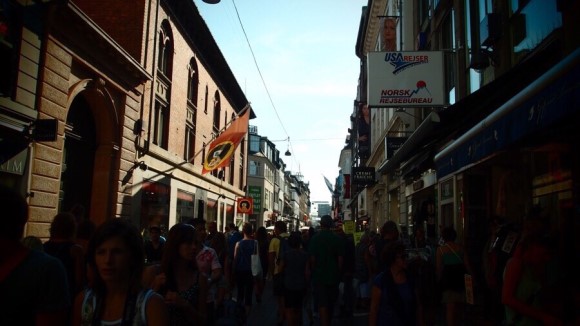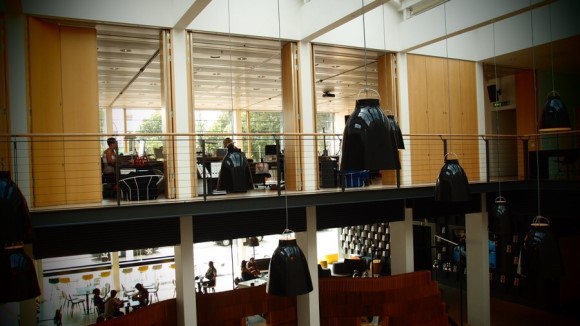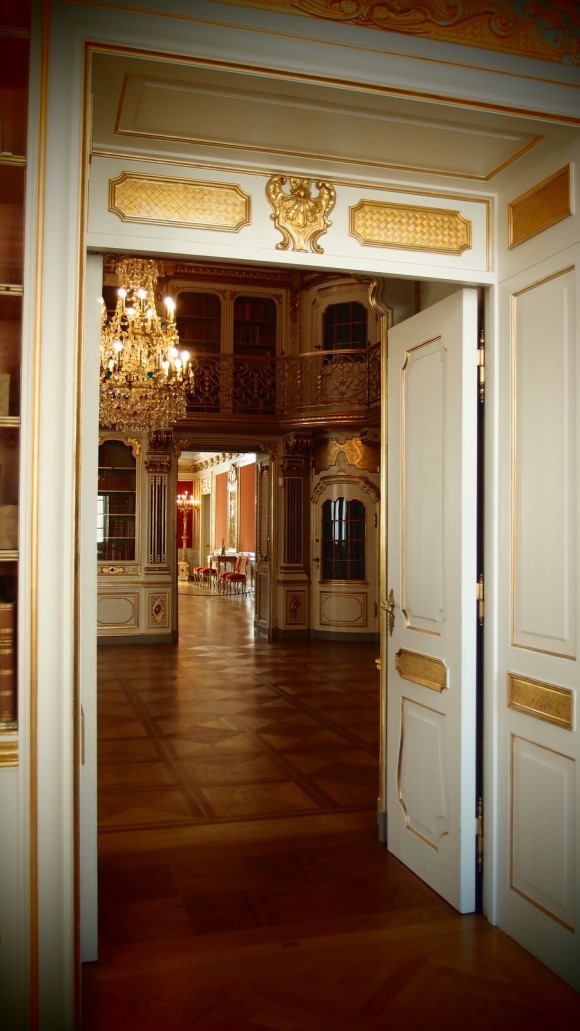I spent a total of six days and five nights in Copenhagen, Denmark. On the first day, I arrived in the evening, so that day quickly passed. Days two through four were dedicated to exploring the city of Copenhagen. On the fifth day, I took a day trip to nearby cities, Odense and Malmö, and on the sixth day, I spent the morning doing a final city tour before catching my flight.
Cityhall) in Danish 10:00, 15:00, in English 13:00 on weekdays, in Danish 11:00, in English 10:00 on Saturday. The meeting point is inside the main entrance of the City Hall. The tour lasts about 45 minutes.
Tower) 11:00, 14:00 on weekday, 12:00 on Saturday. The tour lasts 30 min. climbing 300 steps, as there is no elevator available.
Fee_ Cityhall guidtour 60 DKK, Tower guidtour 40 DKK (Copenhagen Card is available)
One of the highlights of the trip was visiting Copenhagen City Hall, a building completed in 1905, inspired by North Italian Renaissance architecture. Inside, it houses Jens Olsen's astronomical clock, an analog masterpiece with an accuracy of 1/1000th of a second. While this makes it one of the most precise clocks in the world, it still requires periodic renovations to maintain its accuracy. The latest renovation was funded by the Augustinus Foundation, with work beginning in October 2019 and completed on April 2020. During the renovation, the clock is either fully or partially disassembled, so it won’t be visible in its entirety.
However, the idea of a moving Earth was not widely accepted in Brahe’s time, so he developed a modified geocentric model. In his model, Earth remained at the center, but he accounted for astronomical phenomena that the traditional geocentric model could not explain. This approach shows how scientific theories evolve to explain more and more observations.
Tycho Brahe made significant observations of comets, supernovae, and planetary movements. His most famous student, Johannes Kepler, used Brahe’s data to develop Kepler’s laws of planetary motion, which ultimately supported the heliocentric model.
@Geologisk museum; Geological museum
Open_ 10:00~17:00
Close_ Monday
Fee_ 105 DKK (Combination ticket can be used in Animal and Plant Museum for 48 hours)
(Copenhagen Card is available)
At the butterfly exhibit sensitive to climate change, you can learn about various butterflies that inhabit different climates and how the changing environment impacts them. In the Mineral Hall, you'll discover how various elements combine to form minerals. From the perspective of mineral crystallography, you can explore the internal structure of minerals and how these structures determine their external appearance, hardness, color, luster, and other characteristics. Even when the elemental composition is the same, the way the atoms are arranged can create entirely different minerals. A prime example is carbon, which can form either graphite, sold for a few cents in a stationery store, or diamonds, which can sell for thousands of dollars in a jewelry shop, depending on the environmental conditions.
Some minerals react with ultraviolet light to exhibit fluorescence, emitting unique colors not visible under normal light. This phenomenon shows that the same substance can appear in various colors depending on the type of light it interacts with.
Outside the Geological Museum, you’ll find a large rock, which is actually a meteorite. It’s the fifth largest meteorite ever discovered in the world. The museum's gift shop offers a variety of items, including ammonites and gemstones. In addition to the permanent exhibitions, the museum also hosts various seasonal exhibits, making it a great destination for those interested in natural history and science.
@Rundetaarn; Round Tower
Open_ Summer season 10:00~20:00/ (Tuesday, Wednesday ~21:00) / another seasons 10:00~18:00
Close_ 15, 24, 25, 31th on December.
Fee_ 25 DKK
(Copenhagen Card is available)
The Round Tower is one of Denmark's most famous landmarks and a popular tourist destination. It is also the oldest functioning astronomical observatory in Europe. As you ascend, you’ll find various exhibition rooms along the way that showcase different displays.

The tower was commissioned by King Christian IV, with the foundation stone laid on July 7, 1637. It took five years to complete. Known for his deep interest in architecture, the king himself sketched the golden inscription on the front of the tower, which reads, "Leads, God, the right teaching and justice into the heart of Christian IV." King Christian IV was particular about the tower's location. He wanted it in the heart of the city to demonstrate to the world that the king supported science and creativity. Given that the tower was intended for astronomical observations, it made sense for it to be located near the university, away from the distractions of city lights and smoke from wood-burning fires. Some speculate that Christian IV may have also intended the tower to serve military purposes, given its strategic location.

The Round Tower has faced several challenges over the years, including proposals to install an elevator in the spiral staircase or to relocate the entire tower or just half of it due to traffic concerns. These plans were even tested for feasibility.
@Vor Frue Kirke; Copenhagen cathedral
Open_ 8:00~17:00
Nearby, the current site of the Copenhagen Cathedral (Church of Our Lady) has been a place of worship since 1209. The church was destroyed during the 1807 bombardment of Copenhagen and was rebuilt in 1829. The present Neoclassical building was constructed after the Napoleonic Wars, overseen by the architect Hansen from Holstein, with interior designs by the renowned sculptor Bertel Thorvaldsen. Since its completion, the cathedral has hosted the funerals of many prominent figures and performances by the Copenhagen Boys' Choir. It still holds regular services and special events. The tower, over 60 meters tall, houses four bells, the largest of which is the biggest in Denmark. The smallest bell, dating back to 1490, is the oldest in Denmark and is used for morning mass. The cathedral's pipe organ, made in 1995, consists of over 8,000 pipes.

I also visited the Danish Design Center, but I think I ended up in the wrong place, as I found myself in an office. Or perhaps the office really was the Design Center? I wandered around a bit, thinking there might be an exhibit on another floor, but after checking the elevator, I realized there wasn't. I wasn't alone—another tourist, also expecting a design museum, shared the same confusion. We both had a bit of a moment, accidentally finding ourselves in a workspace instead of an exhibition. Quite an unexpected experience!
@Christianborg slot; Christianborg palace
Open_ 10:00~17:00
Close_ Please note that each section of the palace may have occasional closures, so it's a good idea to check their official website before planning your visit.
Fee_ 160 DKK
(Copenhagen Card is available)Christiansborg Palace is located in the heart of Copenhagen on the islet of Slotsholmen. It serves as a central hub for the Danish government, housing the Queen’s official functions, the Danish Parliament, and the Prime Minister’s office, all within its grounds. When the royal family is not using the palace, it is open for guided or self-guided tours, allowing visitors to explore its five distinct areas: the Reception Rooms, the Queen's Tapestries, the Royal Stables, the Royal Kitchen, the underground ruins, and the Royal Chapel.
Christiansborg Palace has been rebuilt three times due to devastating fires. The palace we see today was constructed in 1928, after the previous two structures were nearly completely destroyed. Although the palace was originally intended to accommodate both the royal family and the Danish Parliament, King Christian X chose not to reside there. Today, the palace is primarily used for royal functions, parliamentary sessions, and government offices. The palace's name honors King Christian VI, who demolished the old Copenhagen Castle in 1740 to build the first Christiansborg Palace. This grand structure was destroyed just 54 years after its completion, leaving only the stables intact.

The second Christiansborg Palace was constructed in 1828, but it too was destroyed by a fire in 1884, leaving only the stables and the palace chapel. The underground of Christiansborg's Blue Tower served as a prison, where political prisoners and criminals were held. Among the most famous prisoners was Leonora Christina, the daughter of King Christian IV of Denmark. She was imprisoned in the tower for 21 years, 9 months, and 11 days, paying the price for her husband’s treason. (Let’s hope she was eventually released alive.)
@LEGO store
Open_ 11:00~18:00 (Sunday ~17:00, Friday ~19:00)
If you’re a fan of LEGO, the iconic building blocks that many of us grew up with, you might be excited to know that LEGO is a Danish brand. For those who loved LEGO as a child or are avid collectors, Denmark is the birthplace of this beloved toy, and you may find unique packages that aren’t available in other countries. However, don’t expect them to be cheaper here—Denmark has a high cost of living, and you’ll need to consider the exchange rate as well.
A unique feature at the LEGO stores in Denmark is that you can create your own custom mini-figures. You can choose from a wide variety of parts and accessories to assemble three mini-figures of your own design. It’s a fun way to bring home a truly personalized souvenir! They are 7.99 Euro in Germany.(2024)
@Vor frelsers kirke; Our Saviour Church
Open_ 11:00~15:30 (Tower is closed in winter season)
Close_ Monday
Fee_ 105 DKK
(Copenhagen card is availavle)Our Saviour's Church is a historic landmark in the Christianshavn district, which began taking shape in 1618. An interim church was established nearby in 1640, and the current church was completed in 1696. The organ, installed in 1698, has undergone several restorations, with the most recent renovation starting in 2006 and reopening in 2009. While many churches in Denmark follow Romanesque or Gothic styles, this church is a prime example of Baroque architecture. It was built during the reign of King Christian V, the first Danish king born in Copenhagen. The construction was overseen by Lambert van Haven, a master of Dutch Baroque, although the church was not completed before his death. The interior carvings were done by Christian Nerger.
The altar was designed by Nicodemus Tessin the Younger, who also worked on Stockholm Palace and Drottningholm Palace in Sweden. However, due to pre-existing altar structures and diplomatic tensions between Sweden and Denmark, the altar was not completed until 1832.
@Freetown Christiania
Freetown Christiania is a unique district within Denmark, claiming autonomous self-governance since 1971, a status recognized by the Danish government. Originally an abandoned military base, it was occupied by hippies who transformed it into a vibrant, albeit controversial, community. The area has been known for drug activity and remains home to hippies and anarchists, creating an atmosphere quite distinct from the rest of Copenhagen.
Although it might just be a feeling, one of my travel companions felt uneasy upon entering Christiania, commenting on the strange vibe. We only saw people drinking and graffiti-covered walls, but it was enough to make them want to leave quickly. Whether it was just intuition or a genuine sense of the place, I’m not sure. Christiania does have cafes, restaurants, and plenty of quirky buildings to explore, but if you’re uneasy, it’s best to visit before dark.

(Later, when researching for another trip, I found out that there have been ongoing efforts to address the area's issues, including drug-related problems. Intuition can be powerful!)
After leaving Christiania, we strolled along the nearby canal, transitioning back into the city. The area we entered was a quiet villa neighborhood, offering a peaceful contrast with people out for leisurely walks.
It looks like sunset of evening, It was around 9 PM. And looking back on my trip, I now understand why I barely had time to sit down for a proper meal. I was so focused on cramming as many places as possible into my itinerary that meals took a backseat to sightseeing.

댓글
댓글 쓰기